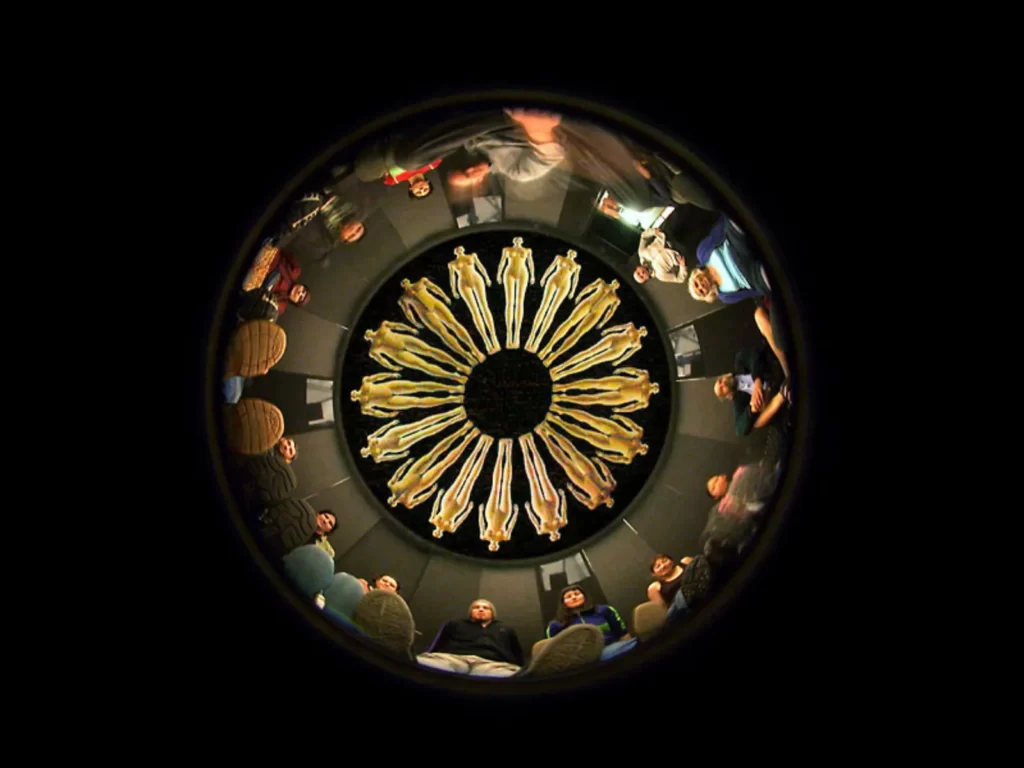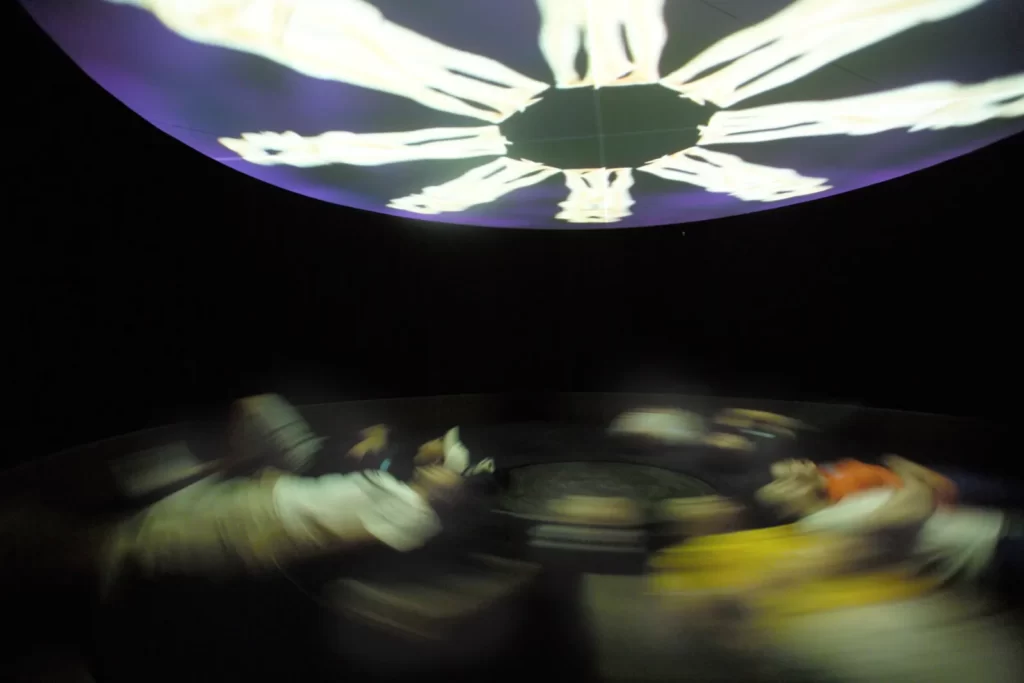Joy Ride for Melbourne International Arts Festival
Joy Ride was a church to displaced intimacy; a declaration that waking up on the wrong side of the bed is usually because we go to sleep that way. Agitation is a mainstay of urban life. Yet, alienation – which was a common feature of pre-digital modernity – is no longer a feature of urbanism. Instead people cling to their digital narratives, hoping it will shield them from the vast swathes of anonymity surrounding them.
As an interactive installation, wedged audience members – fourteen at a time – between a digital ceiling and an industrial floor. The fourteen strangers, lying on a rotating turntable, were pressed so close to the digital projection screen above them that it was not possible to see the entire image. The result was a breakdown of assumed access to the entire media narrative
Joy Ride was a motion control ride designed to break down the expectation of spectacle. The carnival promise was systematically inverted; the ride was not fast but rather slow, melodic and often times melancholic. The experience of the screen was compressed and not complete. The huge eight-metre portable box was branded ‘Joy Ride’ but provided an intimate, disconcertingly gentle subversion of our expectations for narrative escapism via screen content.
This project as a substantial technical undertaking. Its execution required mechanical, software and electrical engineers, architects and projection experts. All the intricacies of these practical elements delivered a fun experience; at the 2003 Singapore Festival alone ten thousand people jumped on over two weeks.
Collaborators
Sir Jonathan Mills
Tao Weis
Toby Reed
Dylan Brady
Geoffrey Nees
Matthew Ngui




